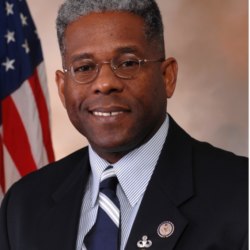Remembering the past; celebrating the present
Remembering the past; celebrating the present
The Emancipation Proclamation was signed Sept. 22, 1862, and documents officially ending the U.S. Civil War were signed on April 9, 1865. Still, racism and prejudice persisted for over 100 years with separate restaurants, restrooms, drinking fountains and schools for Blacks.
Tragic events marred history, including the Tulsa race riots of 1921, the March on Selma and the assassination of leaders like Dr. Martin Luther King Jr. (despite the hope and promise delivered in his impassioned “I have a dream” speech).
Now, as we approach the 157th anniversary of the end to our Civil War, what is the state of U.S. race relations?
Economic opportunities in America 150 years after the end of its Civil War
Since 1990, the University of Georgia’s Selig Center for Economic Growth has produced a multi-cultural economic report. The report measures the yearly increase in purchasing power by ethnic groups and the U.S. economy as a whole. The report clearly shows Asian, Black, Hispanic and Native Americans wield formidable economic clout. Therefore, corporations and their marketing firms can no longer take a one-size-fits-all approach to marketing consumer goods and services. The 2020 report (released in August 2021) shows the buying power of these ethnic groups has ‘exploded’ to $4.94 trillion (28.3% of total U.S. purchasing power) vs. 1990 ($671 billion, 15.6% of the U.S. total).
The combined purchasing power of U.S. consumers grew from $11.3 trillion in 2010 to $17.5 trillion in 2020, up 55%. Of note, the increase in buying power was not equal: Asian Americans grew 111%, Hispanics 87%, Native Americans 67%, and Blacks 61%. In 2020, the Selig Center Report noted ethnic group buying power based as a percentage of U.S. population: 21 million Asian Americans (6.3% of U.S. population) had $1.3 trillion in buying power; 62.1 million Hispanic Americans (18.7% of U.S. population) had $1.9 trillion in buying power; 41.1 million Black Americans (12.4% of U.S. population) had $1.6 trillion in buying power; and 9.7 million Native Americans (2.9% of U.S. population) generated $140 billion in buying power.
For added perspective: if these ethnic groups were a separate country in 2020, their purchasing power would make it the third largest global economy (behind the U.S. and China). Taken as separate countries: Hispanic Americans would be the eighth largest economy (behind France’s GDP of $2.55 trillion; and ahead of Italy’s GDP of $1.85 trillion); Blacks would be the 9th largest economy (virtually tied with Canada’s GDP of $1.6 trillion); Asians would rank 14th (just ahead of Spain’s GDP of $1.25 trillion); and Native Americans would also rank in the top 100.
Hopeful signs of progress in America
Over the last 100 years, America has experienced many positive changes, especially within the Black community. The number of Black members of Congress has increased. A Black president presided for two historic terms. Soon, we will likely have two Black Americans seated on the nine-member United States Supreme Court. Further, a record number of Blacks now hold federal judgeships. The color barrier has been broken in all professional sports in the United States, with Black athletes playing a significant role in baseball and literally dominating in football and basketball. Since 1921, Black Americans have won numerous Academy Awards, traveled in space, and won Nobel Prizes.
Economically, there are additional reasons to celebrate within the Black community.
According to data from a 2020 U. S. Census Bureau survey, Black American’s owned just under 135,000 multi-employee businesses, employing 1.3 million people with another 2 million Black businesses organized as single-person sole proprietorships or partnerships.
The number of Black first-year medical students increased 21% last fall, bringing in a nationwide class of 2,562 future doctors. Black students made up 11.3% of first-year medical students in 2021, up from 9.5% in 2020, and the Law School Admission Council declared the incoming class of 2021 to be the most diverse law school class in U.S. history.
America has come a long way since the Civil War and with God’s help — and kindness, respect and love for each other — we will accomplish even greater things as we continue to recognize and address our failings and shortcomings as an imperfect nation. However, let’s also be mindful of the progress we have made as a nation of immigrants and redouble our efforts to improve the lives of all Americans as we embrace the principles of life, liberty, the pursuit of happiness, individual responsibility, free enterprise, and opportunity and equality for all.


